-
Recent Posts
- Report: “Flash Flooding Is the Number One Storm-Related Killer in the U.S.” Few Cities or Towns in America Are Built to Survive Its Wrath
- Hurricane Helene Dumped 20 Trillion Gallons of Rain, Destroying Entire Towns in Western North Carolina, Hundreds of Miles from any Coastline
- Half of All Deaths from Hurricane Helene Occurred 485 Miles North of Where It Made Landfall
- What Did Madoff, Jeffrey Epstein and Sanctioned Russian Mercenary Group, Wagner, Have in Common? They All Banked at JPMorgan Chase
- Deadly, Exploding Pagers Force the U.S. to Get Serious About Malware from China in U.S. Products that Are Potential National Security Threats
- Wall Street Has Moved Vast Sums of Its Trading to Its Federally-Insured Banks
- The Stock Market Had a Psychotic Episode After the Fed Rate Cut Yesterday, Plunging 479 Points from the Day’s High
- As Trump Launches a Crypto Firm, FBI Reports Crypto Fraud Has Exploded to $5.6 Billion; Representing Almost 50 Percent of All Financial Fraud
- Everything this Book Predicted on Wall Street Megabanks Ruling their Regulators Is Now Unfolding
- The Fed Just Kicked the Capital Increases for the Dangerous Megabanks and their Derivatives Down the Road for Years
- Intel, Boeing and U.S. Steel May Hold the Secrets to What’s Behind All the Talk of a U.S. Sovereign Wealth Fund
- Trump and Paulson’s Proposal: U.S. Sovereign Wealth Fund (or Another Grifter Bailout)
- A Wall Street Regulator Is Understating Margin Debt by More than $4 Trillion – Because It’s Not Counting Giant Banks Making Margin Loans to Hedge Funds
- After JPMorgan Threatens to Sue, the Fed Cuts Its Capital Requirement on the 5-Count Felon from a Planned 25 Percent Hike to Less than 8 Percent
- Three Megabanks Had Loans Outstanding of $1.832 Trillion to Giant Hedge Funds on March 31
- Jamie Dimon’s Washington Post OpEd Gets Pummeled at Yahoo Finance
- In the Span of 72 Hours, Four People Tied to a Hewlett-Packard Criminal Case Died in Two Separate Events
- Crypto Took Down Another Federally-Insured Bank and Just Handed Its CEO a 24-Year Prison Sentence
- All the Devils from 2008 Are Back at the Megabanks: Leverage, Off-Balance-Sheet Debt, Over $192 Trillion in Derivatives, Shaky Capital Levels
- New Study Says the Fed Is Captured by Congress and White House — Not the Megabanks that Own the Fed Banks and Get Trillions in Bailouts
- Data from the Fed’s Emergency Funding Program Shows Spring 2023 Banking Crisis Was Far Deeper than Americans Were Told
- These FDIC-Insured Banks Have Lost 69 to 40 Percent of their Market Value Year-to-Date
- Exposure at Hedge Funds Has Skyrocketed to Over $28 Trillion; Goldman Sachs, Morgan Stanley and JPMorgan Are at Risk
- We Charted the Plunge and Rebound in the Nikkei Versus Nomura and Citigroup; the Correlation Is Frightening
- Former U.S. Labor Secretary Says Billionaires Have No Right to Exist Because their Wealth Comes from Five Illegal or Bad Practices
- Citigroup Is Having a Helluva Summer: A Protest on Thursday Will Turn Up the Heat
- Nikkei Has Biggest Drop in History: Here’s What’s Causing the Global Market Selloff
- JPMorgan Is Tapping Illiquid Assets in its Global Collateral Program; the New York Fed Is Paying for Its Services
- Bank Regulators Issue Warnings on Fintech and Banking as Disasters Pile Up
- Donald Trump Gives a Speech on Not Letting China Win the Crypto Race – Not Realizing China Banned Crypto Mining and Transactions Four Years Ago
- The New York Fed Has Contracted Out Key Functions to JPMorgan Chase; We Filed a FOIA and Got These Strange Invoices
- On the Eve of Netanyahu’s Address to Congress, Senator Bernie Sanders Delivers a Breathtaking Assessment of His War Crimes
- Trump’s Sit-Down with Netanyahu at Mar-a-Lago Will Cost U.S. Taxpayers Millions While Profiting Trump’s Business
- Protecting Trump and His Jet-Setting Adult Children During His Presidency Cost Taxpayers Over $1 Billion
- A Congressman and a Doctor Reported a Woman Being Shot at Trump Rally: She’s Vanished from Official Reports
- Jamie Dimon Goes Missing from Earnings Call, After Dumping $183 Million of His JPMorgan Chase Stock Earlier this Year
- U.S. Senate Candidate Backed by Hedge Fund Billionaires Was Sitting in Front Row at Trump Rally as the Sniper Fired into the Bleachers
- Project 2025: The Fossil Fuel and Banking Money Behind the Madness
- The Fund Created to Unwind a Failing Megabank Has a Problem: There’s No Money in It
- Joe Biden Versus the New York Times
- Grand Jury Transcript in Jeffrey Epstein Case Is Released, Raising Questions about Epstein’s Darkest Secrets Being Protected in JPMorgan Cases
- The Supreme Court Crowns a King, Immunizing Future Criminal Acts Under Project 2025 – a Right Wing Manifesto
- The Debate Disaster and the Supreme Court’s “Chevron” Repeal Have a Money Trail Leading to Charles Koch
- Congressman Andy Barr Stacks a Hearing on the Fed’s Stress Tests with Lobbyists for Megabanks
- The Fed Posts Historic Operating Losses As It Pays Out 5.40 Percent Interest to Banks
- Goldman Sachs’ Bank Derivatives Have Grown from $40 Trillion to $54 Trillion in Five Years; So How Did Its Credit Exposure Improve by 200 Percent?
- The Fed and FDIC Wake Up Suddenly to the Threat of Derivatives, Flunking the Four Largest Derivative Banks on their Wind-Down Plans
- Is the Stock Market Setting Investors Up for a Tech Bust Similar to the Dot.com Bust?
- Chase Bank Customers Are Reporting a Wave of Wire Fraud in their Accounts; the Bank Won’t Make Good on the Looted Funds
- The Senate Race in Ohio Is the Sickest in U.S. History in Terms of Billionaire Money from Outside the State
Search Results for: Federal Reserve
New York Fed Considering Becoming Sugar Daddy to Hedge Funds as their Distress Grows

By Pam Martens and Russ Martens: January 16, 2020 ~ It’s apparently not enough of a billionaire subsidy for the U.S. Treasury’s Internal Revenue Service to give a monster tax break to hedge fund titans by allowing them to pay Federal taxes on the basis of “carried interest,” meaning that they have a special loophole to pay a lower tax rate than many school teachers, nurses and plumbers. Now, according to an article in the Wall Street Journal, the Federal Reserve is actually considering opening its super-cheap repo loan money spigot to hedge funds. It doesn’t get any crazier than this. Morphing from a central bank mandated to set monetary policy on the basis of maximum employment and stable prices, to the lender-of-last-resort to the criminally-charged trading houses on Wall Street and now, potentially, to the insider-trading/Big Short hedge funds, the New York Fed has totally lost its way if … Continue reading
JPMorgan’s Historic Earnings Confirm that Fed Loans Are Subsidizing Profits on Wall Street

By Pam Martens and Russ Martens: January 15, 2020 ~ The New York Fed is back to subsidizing billions of dollars in profits at Wall Street’s trading houses, just as it did during the financial crisis. Yesterday, JPMorgan Chase reported that its profits for the quarter ending December 31, 2019 hit an all-time record. (The bank has been around for more than a century, so that’s saying something.) The quarterly profits were $8.52 billion – for the same three-month period in which the New York Fed has been flooding unnamed Wall Street trading houses with hundreds of billions of dollars each week in super cheap loans. The so-called “repo loans” by the New York Fed are being made at a fraction of where the free market would price loans to these Wall Street trading houses. On September 17, 2019, the first day the Fed began this open money spigot to … Continue reading
Are the Fed’s Repo Loans Being Repaid by Wall Street’s Trading Houses or Just Rolled Over and Over?
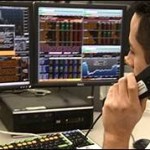
By Pam Martens and Russ Martens: January 13, 2020 ~ Last Friday, the usually reliable and fact-intensive financial website, Wolf Street, threw a hissy fit over how the Wall Street Journal (and by extension, Wall Street On Parade) is reporting the tallies for the repo loans that the New York Fed has been pumping out every business day since September 17, 2019 to the trading houses on Wall Street. The inflammatory headline blared: “The Wall Street Journal (and Other Media) Should Stop Lying About Repos.” The author of the piece, Wolf Richter, explained his criticism as follows: “Here is the ‘in’ of a repurchase agreement [repo loan]: The Fed buys securities (mostly Treasury securities and some agency mortgage-backed securities) in exchange for cash. This adds liquidity to the market. “Here is the ‘out’ of a repurchase agreement: Every repo matures on a set date when the counterparties are obligated to buy the … Continue reading
Both Boeing and the New York Fed Have Been Hiding Dangerous Truths from the American People
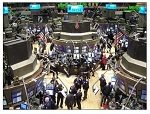
By Pam Martens and Russ Martens: January 10, 2020 ~ The design of the Boeing 737 Max and the Wall Street banking system are both dangerously flawed. The 737 Max has been grounded for almost 10 months following two airline crashes that killed 346 people. The Wall Street banking system, which crashed in 2008 and spread its wreckage into the lives of millions of Americans with job losses, home foreclosures, and trillions of dollars in lost savings is still being allowed to operate on a wing and a prayer. In the case of the Boeing 737 Max, Congress did not know beforehand that dangerous problems existed. In the case of the Wall Street banking system, Congress has had repeated warnings since 2012 of systemic dangers that it has simply chosen to ignore under heavy Wall Street lobbying pressure and the allure of tens of millions of dollars in political campaign … Continue reading
World Bank Releases Bleak Outlook for U.S. Growth this Year through 2022
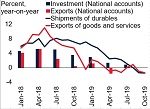
By Pam Martens and Russ Martens: January 9, 2020 ~ Yesterday the World Bank released a report forecasting a decidedly bleak outlook for GDP growth in advanced economies. The U.S. is expected to grow at just 1.8 percent this year and a further drop to 1.7 percent in 2021 and 2022. That forecast throws extremely cold water on what Donald Trump promised just two years ago. On December 6, 2017 President Donald Trump stated at a news conference that his giant corporate tax cut (which Congress ended up passing later that same month) could boost GDP growth to “4, 5 and even 6 percent.” (See video clip below.) In 2018, U.S. GDP registered 2.9 percent and GDP growth for 2019 is expected to drop to approximately 2.2 percent, according to the Federal Reserve’s latest forecast. Thus, a tax cut that has spiraled the United States’ national debt to over $23 … Continue reading
Fed’s Balance Sheet Explodes by $413 Billion in 119 Days
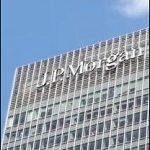
By Pam Martens and Russ Martens: January 8, 2020 ~ On September 4, 2019, the assets on the balance sheet of the Federal Reserve stood at $3.761 trillion. As of January 1, that figure is $4,173,626,000,000. That’s an increase of $413 billion in just the past 119 days and the Fed does not seem inclined to turn off its money spigot to Wall Street anytime soon. At the rate the Fed is now going, its balance sheet is likely to eclipse the $4.5 trillion all-time high it reached in 2015 as a result of the unprecedented sums it funneled to Wall Street following the epic financial crash in 2008 and its three rounds of quantitative easing (QE) to keep interest rates low to appease Wall Street’s trading houses and their trillions of dollars in interest-rate derivative bets. When Jamie Dimon, Chairman and CEO of JPMorgan Chase, testified to the Senate … Continue reading
The Doomsday Machine Returns: Citibank Has Sold Protection on $858 Billion of Credit Default Swaps

By Pam Martens and Russ Martens: January 3, 2020 ~ Lily Tomlin is credited with the quote: “No matter how cynical you get, it is impossible to keep up.” Wall Street regularly brings that message home. According to the latest derivatives report from the Office of the Comptroller of the Currency (OCC), Citibank, the federally-insured, taxpayer-backstopped bank owned by Citigroup, has sold protection to other banks, hedge funds, insurance companies or corporations on a staggering $858 billion of Credit Default Swaps. When a federally-insured bank sells protection to others on Credit Default Swaps, it is effectively taking on the risk of a default event. At a time of unprecedented levels of debt in the system and growing warnings about leveraged loans, that seems like a very unwise move by Citigroup. The OCC notes that Citibank has bought protection via a larger amount of Credit Default Swaps – a total of … Continue reading
Why Is Wall Street the Only Industry in America With Access to the Fed’s Endless Money Machine?

By Pam Martens and Russ Martens: January 2, 2020 ~ Consumers represent two-thirds of GDP in the United States. And yet, when consumers run into trouble, they don’t get a handout from the Federal Reserve – they are forced to file bankruptcy. There are no Fed handouts to small business owners, farmers, or main street merchants either. So why is it exactly that the trading houses on Wall Street, with a serial history of crimes and with the most overpaid and under-punished executives on the planet, are able to perpetually have secret communications with the New York Fed and magically turn on the flow of trillions of dollars of ridiculously cheap loans to bail out their hubris and corruption. The obscene money spigot from the New York Fed to Wall Street’s trading houses didn’t start with the epic financial crisis of 2008, as most Americans believe. It started following the … Continue reading
The Fed Has Made Jamie Dimon $250 Million Richer Through Its Repo Loans

By Pam Martens and Russ Martens: December 27, 2019 ~ As Wall Street On Parade has previously reported, JPMorgan Chase has been fingered as the bank that contributed to the Federal Reserve having to intervene in the overnight loan market on September 17 of this year, and every business day since then. The Fed, through its money spigot, the New York Fed, has flooded Wall Street’s trading houses with hundreds of billions of dollars weekly in cheap loans over the past three months. That cheap, pre-announced source of liquidity has not only caused the stock market to set multiple new historic highs but has caused the stock of JPMorgan Chase to set multiple new historic highs as well. Jamie Dimon is the Chairman and CEO of JPMorgan Chase. Dimon admitted on his quarterly earnings call with analysts that his bank had backed away from lending on September 17. That backing … Continue reading
Trump and the Stock Market Are the Winners in the Fed’s Repo Loan Binge; Here Are the Losers
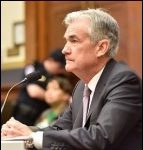
By Pam Martens and Russ Martens: December 23, 2019 ~ The S&P 500 Index and the Dow Jones Industrial Average set new record highs every single day last week. This occurred despite the Federal Reserve justifying its unprecedented hundreds of billions of dollars each week in cheap loans to Wall Street’s trading houses as necessary to stem a “liquidity” crisis. You can’t have a liquidity crisis when the stock market is setting record highs for an entire week. Those two things just don’t correlate. The Fed, through its money spigot, the New York Fed, began sluicing these funds to Wall Street on September 17, the day the overnight borrowing rate in the repurchase agreement (repo) loan market spiked from 2 percent to 10 percent. This was the first such intervention by the Fed since the financial crisis. The repo market is where banks, hedge funds and money market funds loan … Continue reading

